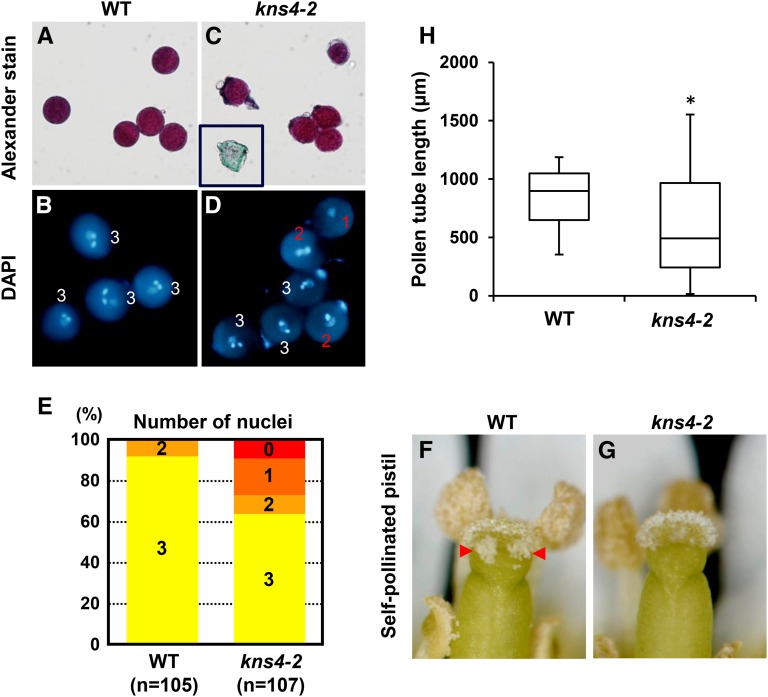Figure 12.
Viability of wild-type and kns4-2 pollen grains. A to E, Staining of wild-type (Col-0) and kns4-2 pollen grains with Alexander dye (A and C, respectively) and DAPI (B and D, respectively). A few aborted pollen grains are observed in the kns4-2 pollen population (inset in C). The numbers in (B) and (D) show the number of nuclei in each pollen grain; (E) shows the percentage of wild-type and kns4-2 pollen grains with 0, 1, 2, or 3 nuclei. F and G, Images of self-pollinated pistils in wild-type (Col-0; F) and kns4-2 (G) flowers. Pollen adhesion is more obvious on the wild-type stigma (red arrowheads). H, Lengths of wild-type (Col-0) and kns4-2 pollen tubes grown in vitro for 16 h as represented by a bar-and-whiskers plot (n = 28). *P < 0.01 (Student’s t-test).

